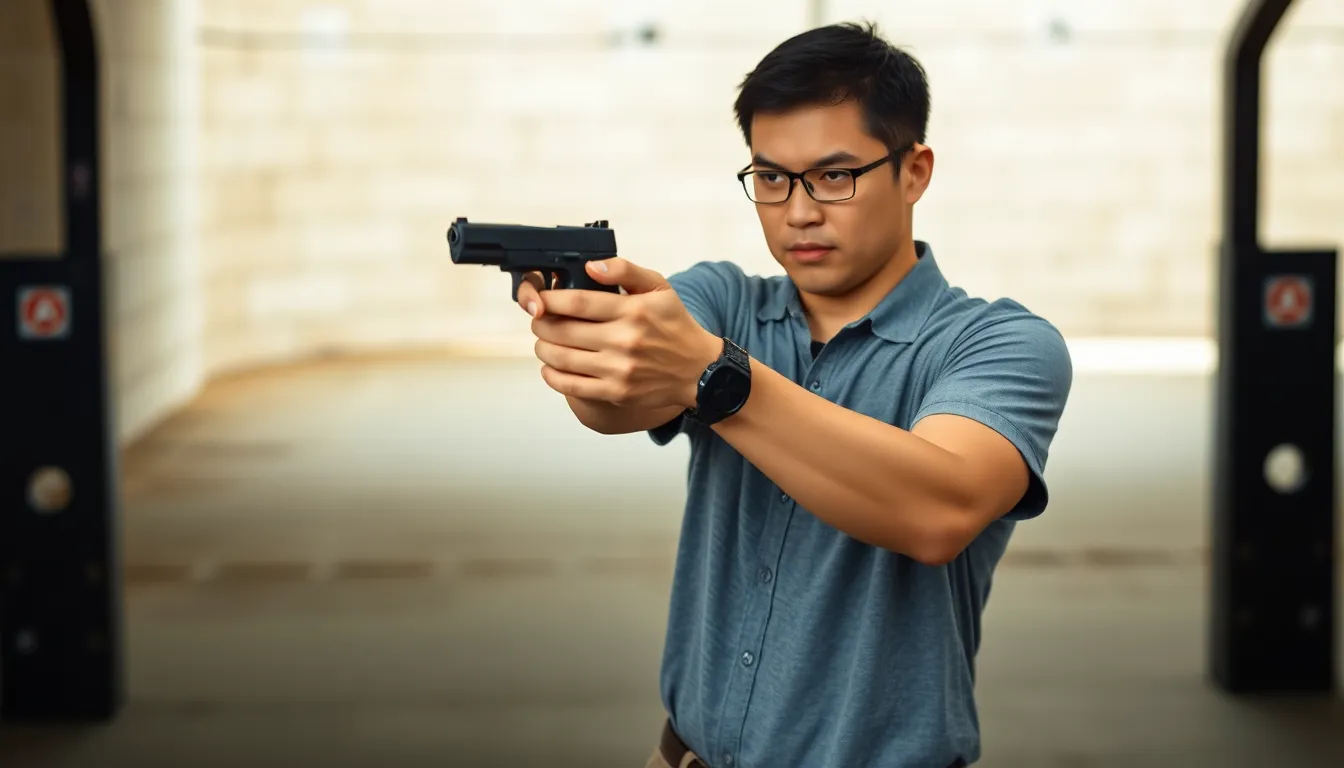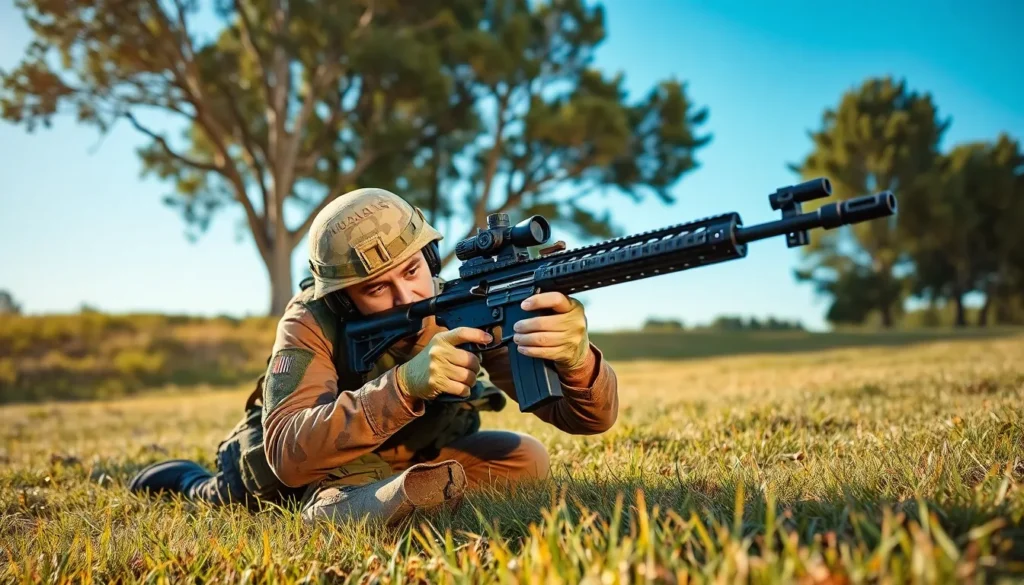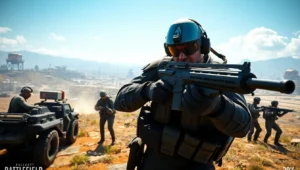In a world where the unexpected can strike at any moment, mastering weapon handling isn’t just a skill; it’s a necessity. Whether you’re a seasoned pro or just starting out, knowing how to handle your gear safely and effectively can mean the difference between a heroic moment and a slapstick comedy routine gone wrong. After all, no one wants to be the punchline in a “what not to do” video.
Table of Contents
ToggleUnderstanding Weapon Safety
Weapon safety is crucial for anyone handling firearms or similar tools. Mastering safety protocols ensures the well-being of the operator and those nearby.
The Importance of Safety Protocols
Safety protocols serve as guidelines to minimize risks when handling weapons. Implementing these protocols prevents accidents and promotes responsible behavior. Regular training and reviews reinforce this culture of safety. Familiarity with guidelines enhances situational awareness, enabling quicker responses in emergencies. Establishing a habit of following safety measures creates a safer environment for everyone involved.
Common Safety Mistakes
Neglecting proper handling techniques leads to significant safety hazards. One common mistake involves pointing the weapon in an unsafe direction, increasing the risk of unintended discharge. Failing to verify that a weapon is unloaded before cleaning or storage can result in catastrophic errors. Overlooking the importance of protective gear, such as eye and ear protection, heightens the risk of injury. Always underestimating the impact of distractions during usage can also compromise safety.
Proper Grip Techniques

Mastering grip techniques is essential for effective weapon handling. Different grips enhance control, accuracy, and safety while handling various firearms or tools.
Types of Grips for Different Weapons
Pistol grips provide a strong hold with the dominant hand while the support hand stabilizes the firearm. Revolvers benefit from a firm two-handed hold to improve accuracy. Shotguns require a shoulder grip combined with a forend grip for balance and control. Rifles utilize a grip that allows for a solid stance, often using both hands for enhanced stability. Each weapon type demands specific grip techniques, ensuring efficient use and safety during operation.
Maintaining Control and Stability
Establishing a proper stance maximizes control and stability when handling a weapon. Feet should shoulder-width apart for a solid base. Arms remain relaxed while elbows slightly bent, allowing for natural movement. Focus on aligning the sights properly for better aim. Keeping the weapon close to the body aids in managing recoil and reduces fatigue. Consistent practice reinforces these techniques, ensuring quick and accurate responses in various situations.
Aiming and Targeting Strategies
Aiming and targeting are essential skills for effective weapon handling. Mastery of these techniques ensures greater accuracy and control.
The Fundamentals of Aiming
Understanding the basics of aiming starts with proper alignment. He or she must focus on aligning the front sight with the rear sight while keeping the target in view. Maintaining a steady hold directly influences accuracy. This requires consistent breathing patterns; inhaling before squeezing the trigger provides stability. Eye dominance plays a crucial role in aiming as well. Identifying which eye is dominant helps to aim more effectively. Overall, assessing the environment and adjusting aim according to distance and conditions enhances performance.
Techniques for Precision Shooting
Precision shooting involves several techniques that guarantee accuracy. First, using a consistent grip allows for controlled handling of the weapon. Incorporating slow and deliberate trigger pulls minimizes movement, ensuring shots stay on target. Additionally, utilizing corrective measures, like adjusting the sights based on feedback, improves outcomes with practice. Adopting specific stances, such as isosceles or Weaver, can enhance stability and aim under various conditions. Regular practice of these techniques fosters familiarity and builds confidence in aiming abilities.
Reloading and Malfunction Management
Mastering reloading and handling malfunctions substantially enhances weapon handling proficiency. Efficient techniques streamline the process and minimize risks.
Best Practices for Reloading
Practice reloading in a controlled environment regularly. Position the firearm securely and keep the muzzle pointed downrange. Transitioning from an empty magazine to a full one requires smooth motions. Grasp the magazine firmly to ensure a reliable reload. Maintain focus on the firearm’s operational state, and confirm a full magazine is in place before resuming. Timing plays a crucial role; executing reloads under pressure simulates real-world conditions. Drilling these practices often builds muscle memory and increases speed.
Addressing Common Malfunctions
Recognizing and resolving common malfunctions is essential. Jams often occur due to dirty actions or improper ammunition. Clearing a jam requires a swift yet careful approach. Utilize the tap, rack, and reassess method to quickly address stoppages. First, tap the magazine’s base to ensure it’s seated. Next, rack the slide to chamber a fresh round, and reassess the situation. Misfires may also happen; maintain composure and wait before investigating. Focus on understanding each malfunction type, as familiarity aids in swift resolution and heightened safety.
Situational Awareness and Environment
Situational awareness plays a vital role in weapon handling. Understanding the environment enhances safety and effectiveness during use.
Assessing Your Surroundings
Evaluating surroundings begins with identifying potential threats. Observing the location helps determine areas of danger and safe zones. Recognizing escape routes offers options if needed. Noting signs of people nearby, especially children, is crucial for responsible handling. Maintaining awareness of additional factors such as weather conditions impacts visibility. By categorizing these elements, one can prepare for various scenarios.
Reacting to Unexpected Situations
Responding to unexpected situations requires composure. Staying calm ensures effective decision-making during high-pressure moments. Quick assessment of the new circumstances aids in formulating a response. Prioritizing safety minimizes risks to oneself and others nearby. Utilizing cover may provide additional protection from potential threats. Engaging with clear communication can also de-escalate tensions and enhance safety. Having a plan in place before engaging in any activity with a weapon significantly improves outcomes.
Mastering weapon handling is essential for anyone who owns or operates firearms. Prioritizing safety and effective techniques not only enhances personal proficiency but also ensures the safety of those around them. Regular practice of grip, aiming, and reloading techniques builds confidence and prepares individuals for various scenarios.
Situational awareness remains a cornerstone of responsible weapon handling. By assessing surroundings and maintaining focus on potential threats, individuals can make informed decisions in high-pressure situations. The journey to becoming a skilled handler involves continuous learning and adaptation to improve safety and effectiveness. Embracing these principles fosters a culture of responsibility and respect for firearms.





